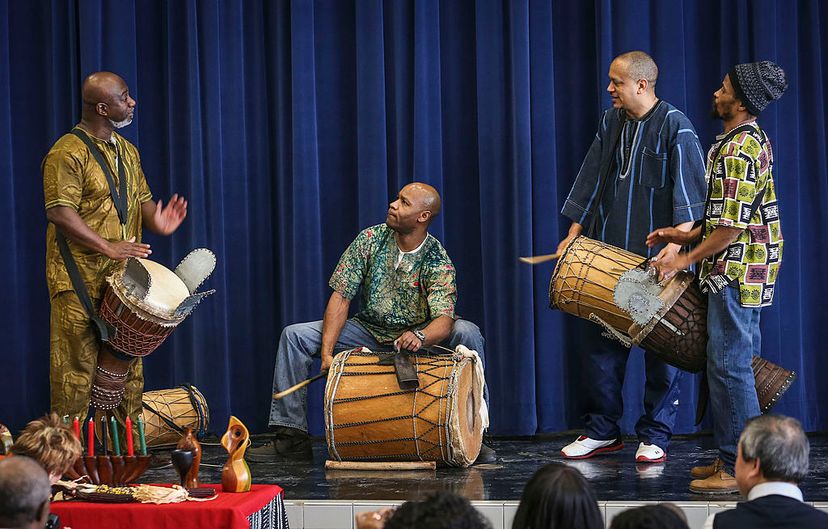Celebrating Kwanzaa - Holiday Traditions

Millions of Africans -- not only in America but all over the world -- celebrate Kwanzaa each year. They come together with family and friends to honor African ancestors and traditions and look forward to their future as a people. They gather in homes, in schools, in churches and in community centers.
The official colors of Kwanzaa are black, red, and green. These colors have always had significance to Africans (they are the colors of the African flag), but they were introduced to African Americans by Marcus Garvey, a black nationalist leader in the early 20th century. The color black stands for the African people; red represents their struggle (blood); and green is a symbol of their future. Most Kwanzaa decorations are made in the holiday's symbolic colors.
Advertisement
People use a variety of decorative items to make their homes feel festive during Kwanzaa. These include baskets, African art, posters, the African flag and harvest symbols. The most prominent feature in the house is a table spread with the mat (Mkeka), upon which are displayed the other symbols of Kwanzaa:
- The candle holder (Kinara) holds the seven candles (Mishumaa Saba). One candle on the Kinara is lit for each day of the celebration. The black candle in the center is the first to be lit. Then one candle is lit each night, starting at the far left (a red candle) and then alternating between red and green, working from the outside toward the center of the candle holder.
- The Mazao (fruits and vegetables) are placed in a bowl or basket.
- Also placed on the mat are the Muhindi (corn), one ear of corn for each child in the home.
- The Unity Cup (Kikombe cha umoja) is used to pour the libation (water, juice or wine) for each family member.
- Gifts (Zawadi) of books, videos or other educational items may be placed on the mat.
Now let's see what goes on during the Kwanzaa feast.